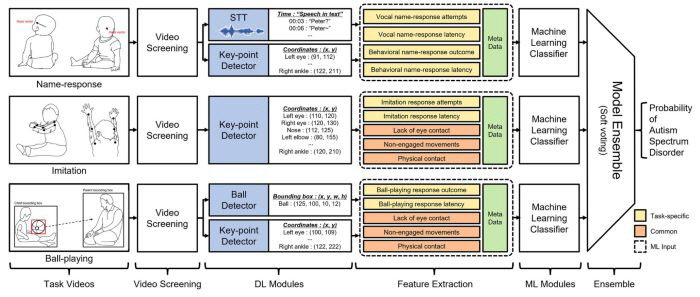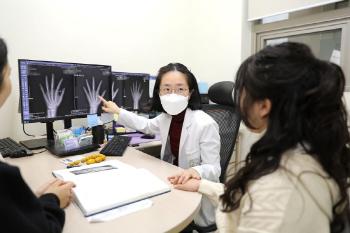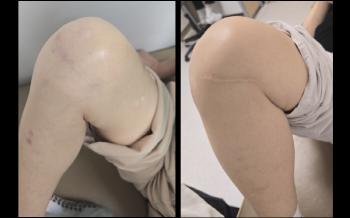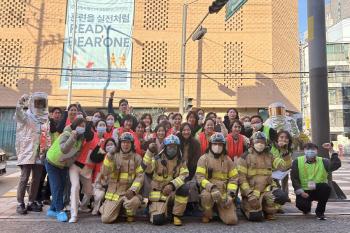1 minute video taken at home, AI early screening of autism risk...75% accuracy
|
A joint research team organized by Seoul National University Hospital and participated by Severance Hospital announced on the 14th that it has developed an artificial intelligence (AI) model that predicts the risk of autism spectrum disorder by analyzing a minute's video taken by parents. The model performed AUROC 0.83 and accuracy of 75%, and quickly identified at-risk children, confirming their potential to lead to early intervention. The research results were published in the latest issue of the Nature sister magazine 'npj Digital Medicine (IF 15.1)'.
Autism Spectrum Disorder (ASD) is a representative neurodevelopmental disorder caused by difficulties in social communication and repetitive behavior. Globally, about 60 million people and about 2% of children in Korea experience it, and early diagnosis greatly influences treatment effectiveness and prognosis.
However, actual diagnosis is often made after the average age of 3.5 to 4. The average age of diagnosis in the United States is 54 months, and in Korea, it is common to wait one to two years in large hospitals, making it easy to miss the optimal time to intervene before the age of two. Existing tests (ADOS, ADI-R) require long face-to-face evaluations by experts, and caregiver surveys (M-CHAT, SRS-2, etc.) have low accuracy, so early screening was limited.
The study was led by Professor Kim Bung-nyeon of the Department of Pediatric Psychiatry at Seoul National University Hospital and Professor Kim Young-gon of the Department of Convergence Medicine, and nine domestic medical institutions, including Professor Chun Geun-ah of Pediatric Psychiatry at Severance Hospital, participated. The subjects of the study were 510 children aged 18 to 48 months, of which 253 were autistic and 257 were normally developed.
The research team had parents do three tasks: △ name calling reaction △ simple imitation behavior △ ball exchange, and shoot within 1 minute each. The video was transmitted to the research team through a mobile app, and AI automatically analyzed it.
AI recognized speech and tracked the movement of 17 joints of the body and the position of the ball to quantify clinically important behavioral indicators such as △ response speed △ eye contact time △ number of parental interventions △ interaction time. After training this data on a task-specific model, we created an ensemble model that synthesized the three tasks to predict the probability of autism risk. The AI model is a method of classifying high-risk and low-risk groups by quantifying and calculating the child's reactions and interactions through this process.
As a result of the analysis, all three tasks showed performance of 0.78-0.81 AUROC and 73-75% accuracy, and among them, the ball play task recorded the highest accuracy. The ensemble model, which combines the three tasks, showed the best performance with an AUROC of 0.83 and an accuracy of 0.75.
In addition, ASD children showed characteristics that they responded late, had a short eye contact time, and needed parental intervention more often when called by name. In particular, most of the cases missed by AI were children with mild symptoms, suggesting the need for early observation, as it is ambiguous to be confirmed as autistic but may be a 'boundary child' showing danger signals such as delayed development.
This model does not reach the high diagnostic performance of more than 95% shown by specialized diagnostic tools such as ADOS-2 and K-CARS, but it is highly accessible and realistic because it utilizes images taken at home. In particular, it takes an average of only 14 seconds to analyze a single video, so it is highly efficient, and at-risk children can be quickly selected without direct participation from experts. Thanks to these characteristics, early intervention can be induced as a primary screening tool in environments with high availability in areas with insufficient medical infrastructure or low-resource countries, and long waiting times or lack of professional manpower.
Professor Kim Young-gon (Department of Convergence Medicine) "We have prepared the world's first automation tool that allows parents to screen autism early with only short videos taken at home."In the future, we will expand our research to various groups to further increase the possibility of actual clinical application" he said.
Professor Kim Boong-nyeon (Department of Pediatric Psychiatry) emphasized that `In the face of delayed early diagnosis due to long waiting and high cost, this study will be a new solution to early screening autistic children easily and quickly based on short videos through cooperation between parents and clinicians without relying on expert face-to-face testing.'
Meanwhile, this study was conducted with the support of the National Mental Health Center's Digital Therapy Development (R&D) Project for Developmental Disabilities.
|
This article was translated by Naver AI translator.





